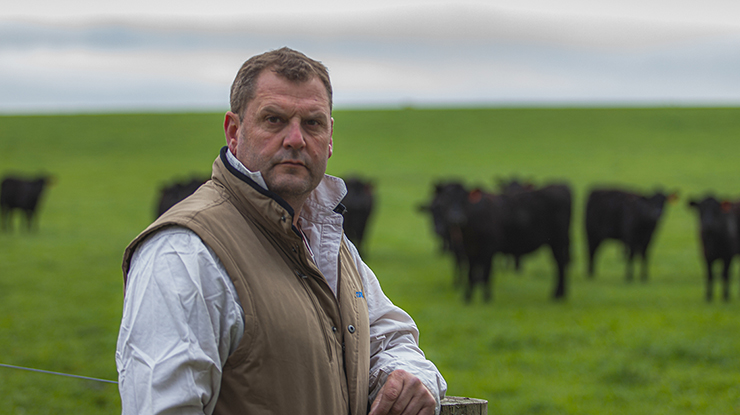 Jim Gaylard, Trawalla property manager, Rose Grange Pastoral Company, Little River, near Geelong
Jim Gaylard, Trawalla property manager, Rose Grange Pastoral Company, Little River, near Geelong
Ensuring consumers enjoy a great eating experience is paramount for Victorian grassfed beef producer, Jock Richmond, who uses the Meat Standards Australia (MSA) Index to benchmark the eating quality outcomes of his Angus cattle.
Jock is fourth-generation of the Richmond family to run Rose Grange Pastoral Company at Little River, near Geelong, with the mixed-farming business comprising beef, prime lamb and cropping production across an aggregation of 3,220ha.
A registered MSA producer for nine years, Jock was awarded the 2019 MSA Excellence in Eating Quality Most Outstanding Beef Producer Award for Victoria for Band 1 producers, based on his MSA compliance of 97.7% and average MSA Index of 62.97.
Jock said the carcase feedback provided by MSA had been a valuable business tool which he used to inform herd management decisions.
"We run 900 Angus females and turn off grass-finished steers and cull heifers annually for MSA," Jock said.
"We have a split calving - 40% of our herd calve in the autumn and 60% calve in the spring.
"We are in the JBS Farm Assurance Program and all of our cattle are bred and finished on the same property and sold off to target a 300-330kg carcase weight.
"They're run predominantly on a mix of phalaris clover and ryegrass pastures, with supplementary silage in the summer and cereal hay in the winter for fibre.
"We grow all own hay and crops for cattle production, including grazing wheat and grazing oat varieties.
"Our steers are finished on an oat-lucerne mix or on straight grazing oats or grazing wheat.
"We use the myMSA platform to access carcase feedback and tools, and the first thing we always look at is our average MSA Index."
The MSA Index is a number between 30 and 80, and is a weighted average of the predicted MSA eating quality scores of 39 MSA cuts in a carcase. It is a standard national measure of the predicted eating quality and potential merit of a carcase.
"Our ultimate goal is to average an MSA Index of 65, which is pretty high, but we like to be between 60 and 65 if we can," Jock said.
"I'm a big believer that if we can maintain the eating quality of our meat for the end user, it augers well for our product. A good eating experience is paramount, no matter what you're eating.
"We are constantly tweaking things. If we look at the Index and see that our Index is down a bit, then we'll go through the feedback and pull it apart to see if a batch of steers were, for example, lower in intramuscular fat (IMF) or if the eye muscle area (EMA) was back. If our Index isn't where we're aiming for, then we want to know why."
Jock said genetics are important in improving eating quality, with bulls selected for a range of Estimated Breeding Values (EBVs) including 600-day weight gain, EMA and IMF data.
For Jock, the key to managing cattle for MSA compliance is nutrition.
"A big thing for us is ensuring the animals don't have any setbacks at any stage of their life from a nutritional point of view, which is not easy when you experience bad seasons," Jock said.
"The weaning process is a stressful time for a calf, so it's really about minimising stress and making sure nutrition is as good as we can possibly get it at all times."






